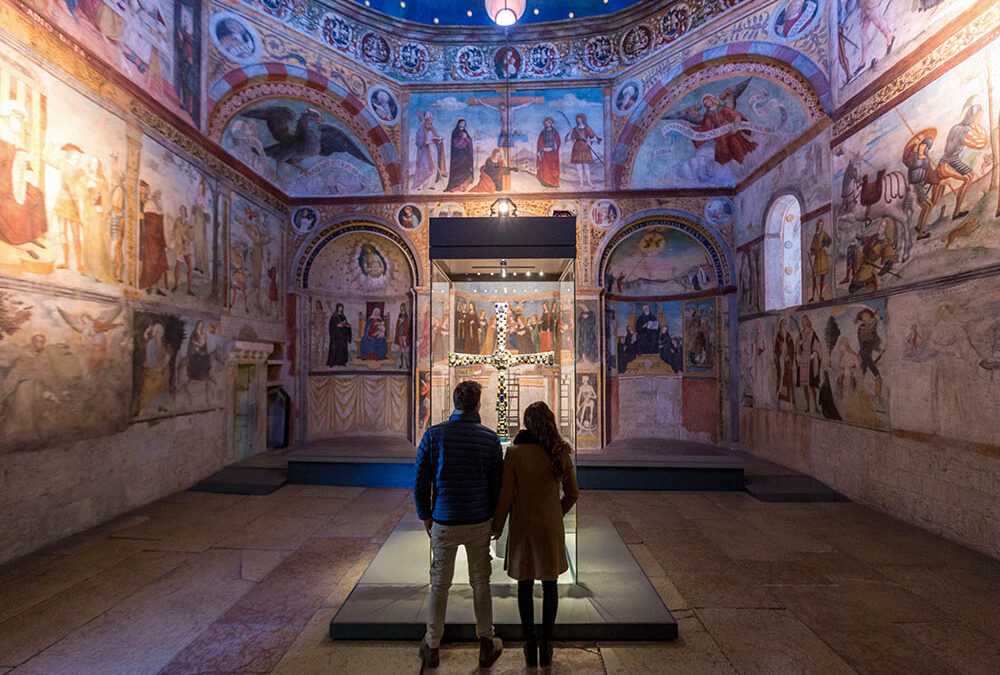The complex of Santa Giulia is composed of cloisters and three churches, San Salvatore, the Choir of the Nuns, and Santa Maria in Solario. The last one contains the precious gemmed cross of King Desiderius. These spaces are arranged at different heights, thus highlighting the evolutionary phases and stages of growth of the city’s construction up to today.
The guided tour begins with the Roman section, starting from its public dimension and moving to a private sphere of Roman living represented by the “domus” (the dwellings) Following the fall of the Roman empire, Brescia enjoyed a flourishing period between 568 and 774 D.C, when it was annexed to the LONGOBARDORUM kingdom founded in Italy by the Longobards who had left the Scandinavian peninsula. They subdivided their reign into dukedoms but changed between the VIth and VIIIth centuries after converting to Christianity. As a result, this former barbarian community developed its own artistic style, which was influenced by the Roman and Byzantine civilizations.
The complex of Santa Giulia and San Salvatore was conceived as a convent for Benedictine nuns and is now one of the most important examples of early medieval architecture which remained intact because this institution maintained its economic wealth throughout the centuries.

